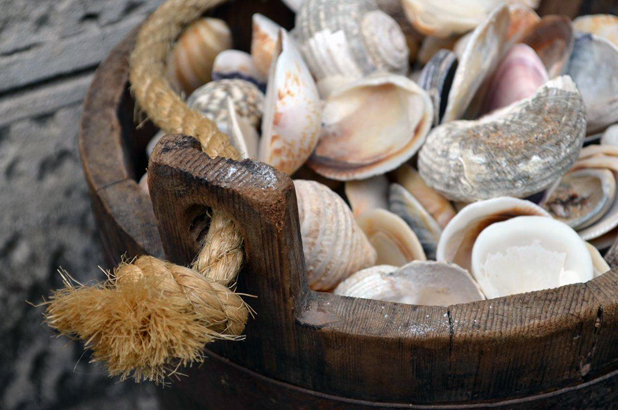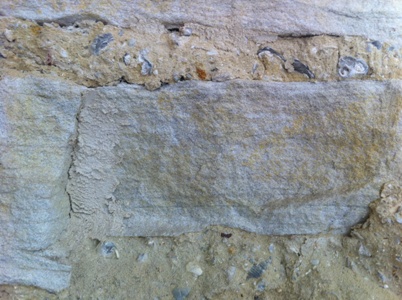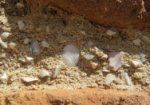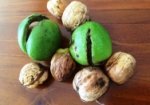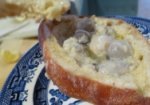Decorative and often valuable shells were commonly displayed in colonial houses, particularly arranged across chimneypieces; we display them in the same way in the recreated interiors at Vaucluse House.
From the table to the construction site
It would be a stretch to describe oyster shells as ‘decorative’ – though traces remain of them embedded in the stucco lining of the ceiling of the 1845 grotto at Elizabeth Bay House; and who could forget the famous (and now sadly demolished) oyster and clam-shell encrusted facade and cave-like interior of the Grotta Capri restaurant at Kensington? Their value to the early colonists was very different however: they were a vital component in building.
Today our plaster is based on gypsum. In the 18th and early 19th centuries, however, plaster and stucco were based on calcium, the usual source of which was limestone, chalk or even marble (which unfortunately explains the disappearance of many a classical ruin over the centuries). In the very early colony, lime was a rare commodity and many builders complained that the poor quality of their mortar forced them to use simple clay instead; imagine the effect of a heavy Sydney thunderstorm on the buildings of the infant town.
In search of a local calcium supply – there is no limestone near Sydney – the colonists quickly turned to gathering shells. Exposed to high heat, the calcium carbonate in the shells collapsed into calcium oxide – or ‘quicklime’. This was then slaked in water overnight, prior to its use in mortar or in the stucco so characteristic of colonial Regency building. The whole process from gathering to slaking was hot and, considering how caustic lime is on unprotected skin, very unpleasant work for convict labourers. WC Wentworth described the process in 1819:
The lime procured at [Newcastle] is made from oyster shells. These shells lie close to the banks of the river, in beds of amazing size and depth. How they came there has been a matter of surprise and speculation to the colonists. Some, are of the opinion that they have been gradually deposited by the natives [aborigines] in those periodical feasts of shellfish, for the celebration of which they still assemble at stated seasons in large bodies…
… The process of making lime from them is extremely simple and expeditious. They are first dug up and sifted and then piled over large heaps of dried wood, which are set fire too, and speedily convert the superincumbent mass into excellent lime. When thus made it is shipped for Sydney and sold for 1 shilling per bushel.
Description of the Colony of New South Wales, London, Whittaker, 1819.
The shells were also burnt in pits and brick kilns. It is telling that shell lime was being transported to Macquarie-era Sydney – for the main source of shells around Sydney Harbour was by then practically exhausted. These had been the great middens – often massive piles of discarded shells, bones and other detritus – built up over thousands of years by local Aboriginal groups. Shell gatherers were also proving a nuisance to harbourside landowners, such as John Harris Jnr who placed advertisements warning against those “…cutting down Timber, gathering shells, burning Lime, or Salt [by evaporation of sea water]…” on the waterfront at Ultimo House (Sydney Gazette, 10th April, 1819).
‘Shelly mortar’
At Wentworth’s own home – Vaucluse House – we can see colonial ‘shelly mortar’ in the stone walls of the laundry as well as in a number of garden and retaining walls. The mortar was quite likely made with lime from local sources of shells, including the beach below Vaucluse House and nearby middens, the traces of which remain around Vaucluse Bay and Nielsen Park. David Wilson, the HHT’s Building Facilities Manager, tells us that local beach sand was probably also used, and this would be the source of the obvious shell fragments.
In recent conservation work at Vaucluse, though we didn’t go quite as far as burning shells for lime, the appearance of the sandy mortar was replicated using a slaked lime mortar with a mixture of four parts Sydney sand and one part common ‘brickies’ sand. The grit in the brickies’ sand adds texture, mimicking the shell, while also adding a stronger colour. This mix has been used for a number of building repairs, including a section of wall alongside the service court and the main verandah’s western steps.
